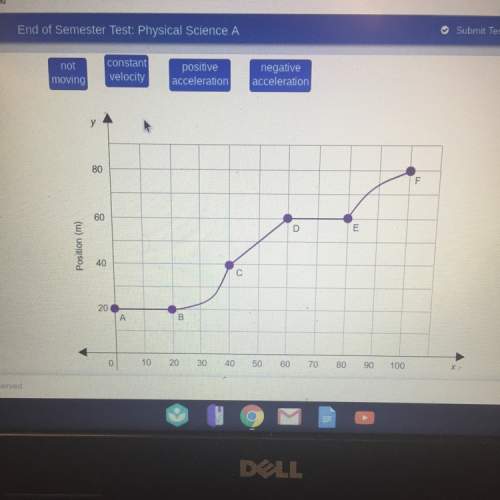
Physics, 06.02.2020 01:41 adanaguirre17
In a physics lab experiment, you release a small steel ball at various heights above the ground and measure the ball’s speed just before it strikes the ground. you plot your data on a graph that has the release height (in meters) on the vertical axis and the square of the final speed (in m2/s2) on the horizontal axis. in this graph your data points lie close to a straight line. (a) using g = 9.80 m/s2 and ignoring the effect of air resistance, what is the numerical value of the slope of this straight line? (include the correct units.) the presence of air resistance reduces the magnitude of the downward acceleration, and the effect of air resistance increases as the speed of the object increases. you repeat the experiment, but this time with a tennis ball as the object being dropped. air resistance now has a noticeable effect on the data. (b) is the final speed for a given release height higher than, lower than, or the same as when you ignored air resistance? (c) is the graph of the release height versus the square of the final speed still a straight line? sketch the qualitative shape of the graph when air resistance is present.

Answers: 2


Another question on Physics

Physics, 22.06.2019 03:40
Science and technology are interdependent. advances in one lead to advances in the other. give an example of this phenomenon.
Answers: 1


Physics, 22.06.2019 07:00
Aball has an initial velocity of 3 m/s. if there is no friction, what is the highest it could roll?
Answers: 1

Physics, 22.06.2019 15:00
Consider a uniformly charged ring in the xy plane, centered at the origin. the ring has radius a and positive charge qdistributed evenly along its circumference. a)what is the direction of the electric field at any point on the z axis? . b)what is the magnitude of the electric field along the positive z axis? use k in your answer, where k=14πϵ0. d)the ball will oscillate along the z axis between z=d and z=−d in simple harmonic motion. what will be the angular frequency ω of these oscillations? use the approximation d≪a to simplify your calculation; that is, assume that d2+a2≈a2. express your answer in terms of given charges, dimensions, and constants
Answers: 2
You know the right answer?
In a physics lab experiment, you release a small steel ball at various heights above the ground and...
Questions



Physics, 30.11.2021 02:20


History, 30.11.2021 02:20

Mathematics, 30.11.2021 02:20

Biology, 30.11.2021 02:20

Geography, 30.11.2021 02:20




Chemistry, 30.11.2021 02:20


Mathematics, 30.11.2021 02:20


SAT, 30.11.2021 02:20

SAT, 30.11.2021 02:20

Mathematics, 30.11.2021 02:20

Physics, 30.11.2021 02:20




